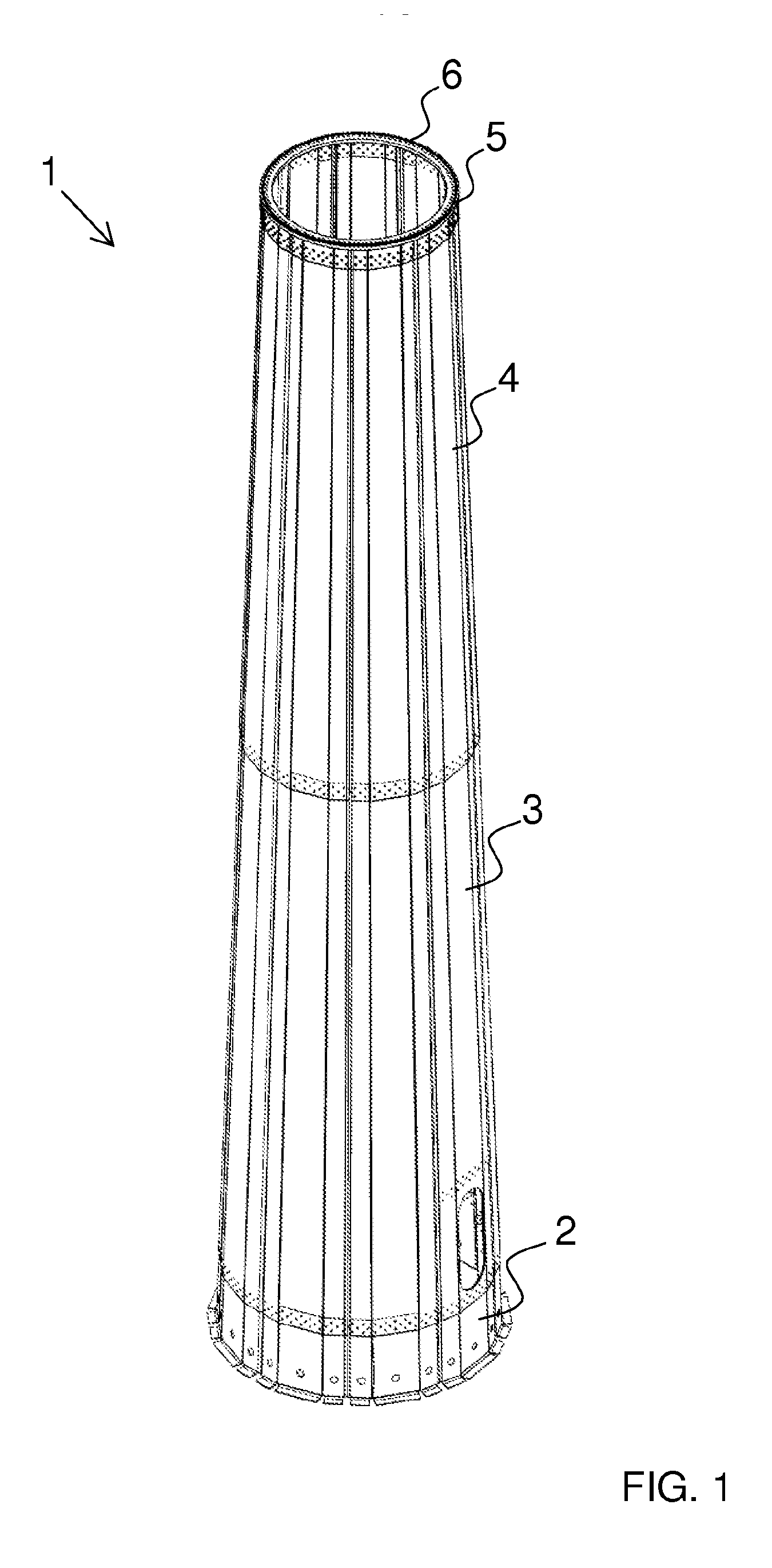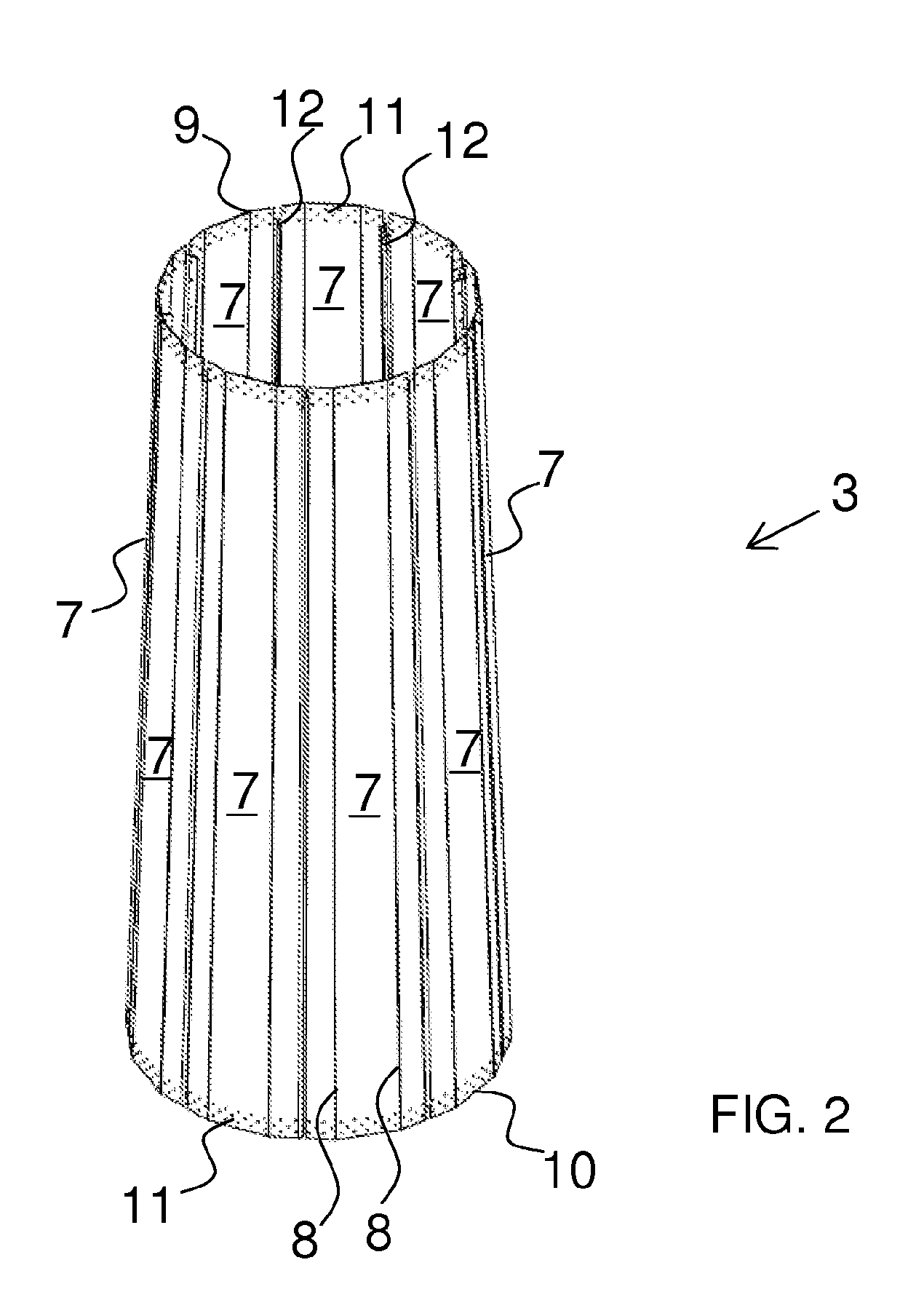Tower element
a technology of towers and elements, applied in the direction of rod connections, sustainable manufacturing/processing, final product manufacturing, etc., can solve the problems of increasing the size of towers, inability to transport via road networks, and increasing the cost of transportation solutions, so as to achieve a large degree of flexibility in these steps
- Summary
- Abstract
- Description
- Claims
- Application Information
AI Technical Summary
Benefits of technology
Problems solved by technology
Method used
Image
Examples
Embodiment Construction
[0008]As mentioned above, the invention concerns a tower element for a tower, preferably for a wind power plant, where the periphery of the tower element is made up of a number of segments provided with inwardly facing flanges at the longitudinal sides for mounting to corresponding flanges on laterally arranged segments, where the individual segments are made with an overlap on the outer surface in the transverse joints and with a butt joint at the inwardly facing flanges.
[0009]By such a tower element there is achieved the great advantage and flexibility that production in the form of machining, surface treatment, transport and mounting of the individual segments can be performed in a much easier way than possible with tower elements which are welded together and finished in a factory. Compared with the closest prior art as described above, there is the great advantage of the solution according to the invention that in the overlap existing on the outer surface between two segments a...
PUM
 Login to View More
Login to View More Abstract
Description
Claims
Application Information
 Login to View More
Login to View More - R&D
- Intellectual Property
- Life Sciences
- Materials
- Tech Scout
- Unparalleled Data Quality
- Higher Quality Content
- 60% Fewer Hallucinations
Browse by: Latest US Patents, China's latest patents, Technical Efficacy Thesaurus, Application Domain, Technology Topic, Popular Technical Reports.
© 2025 PatSnap. All rights reserved.Legal|Privacy policy|Modern Slavery Act Transparency Statement|Sitemap|About US| Contact US: help@patsnap.com



